Two Sisters from Boston

Brief Synopsis
Cast & Crew
Henry Koster
Kathryn Grayson
June Allyson
Lauritz Melchior
Jimmy Durante
Peter Lawford
Film Details
Technical Specs

Synopsis
In Boston, in 1903, socialite Abigail Chandler performs a piano recital for her friends and dreams of singing at New York City's Metropolitan Opera. Abigail's wish is finally realized when her aunt Jennifer and uncle Jonathan send her to New York to begin voice lessons. Soon after she arrives in New York, however, Abigail becomes disheartened upon learning that her meager allowance is not enough to pay for the lessons she needs. Desperate to make more money, Abigail adopts the stage name Susie Smith and takes a job singing at The Golden Rooster, a notorious beer hall in the Bowery district. Abigail becomes an instant singing sensation at the beer hall and eventually comes to be known as "High C Susie." Meanwhile, back in Boston, Abigail's family reacts with shock and dismay at rumors that Abigail has been seen performing in the Bowery. Determined to learn the truth about Abigail's reputed decline, Jonathan, Jennifer and Abigail's prim sister, Martha Canford Chandler, set out for New York. Jonathan immediately accuses Abigail of "showing her limbs" at a Bowery honky-tonk, but Abigail insists that the rumors are false and that she is performing, as planned, at the Metropolitan Opera. To show that she has made a success of herself in New York, Abigail, with help from her friend "Spike," a Bowery piano player, slips unnoticed into the chorus of the Metropolitan Opera during a performance attended by her family. Her scheme goes awry, however, when she tries to move closer to the front of the stage and accidentally interrupts an aria by the opera's leading tenor, Olaf Olstrom. Despite the performance fiasco, Jennifer, Jonathan and Martha are now convinced that Abigail is doing fine at the opera. Jennifer and Jonathan return to Boston, but Martha, who has discovered Abigail's ruse, decides to stay in New York to keep an eye on her sister. Determined to lead Abigail to a better life, Martha decides that she must encourage her to marry. While busily arranging a romance between Abigail and Lawrence Tyburt Patterson, Jr., the son of one of the city's leading opera patrons, Martha finds herself attending the Golden Rooster with greater frequency, and singing and dancing with Abigail. Martha's plan appears destined for success when Abigail is invited to sing at a reception held at the Pattersons' home. Abigail's performance wins the praise of many of the influential guests, and Martha is satisfied that her sister has finally received the critical recognition she deserves. Lawrence, however, has overlooked Abigail's beauty and talent, and has, instead, fallen in love with Martha. After realizing that Abigail is not in love with Lawrence, Martha allows her romance with Lawrence to blossom, and together she and Lawrence work to ensure the success of Abigail's musical career.

Director

Henry Koster
Cast

Kathryn Grayson
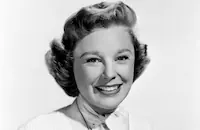
June Allyson

Lauritz Melchior

Jimmy Durante

Peter Lawford

Ben Blue

Isobel Elsom
Harry Hayden
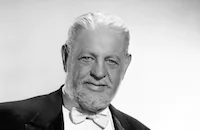
Thurston Hall

Nella Walker
Gino Corrado

Marina Koshetz
Wilson Wood
Chester Clute
Ben Lessy

Vince Barnett
Eddie Jackson
Jack Roth
Norman Leavitt
Dewey Robinson
Charles Regan
Jack Lipson
Katherine York
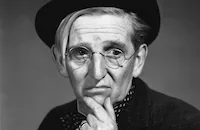
Jimmy Conlin
Jetsy Parker
Gloria Alvord
Patricia Denise
Marion Ackerson
Ann Cameron
Sheila Egan
Virginia Ellsworth
Carrie Devan
Judy Brent
Dona Dax
Effie Laird
Clemence Gifford
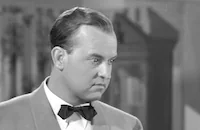
Grady Sutton
Virginia Engels
Kate Mackenna
Johnny Berkes
Bryn Davis
George Suzanne

George Mann
Ann Mccormack
Eddie Polo
Fred "snowflake" Toones
Ralph Brooke
Marjorie Davies
Frank Hagney
Paul Newland
Charles Previn
Cameron Grant
Skeets Noyes
Helyn Eby-rock
Broderick O'farrell
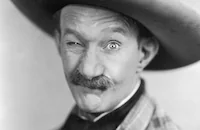
James Finlayson

Chester Conklin
Audrey Betz
Marek Windheim
Richard Kean
Franco Corsaro
Jack Deery
Jack George
Rudolph Germaine
Boyd Bennett
Jerry Lee
George Calliga
Tom Tamarez
Daniel Degonghe
Ed Agresti
Mario Bramucci
Dina Smirnova
Symona Boniface
Helen Dickson
George Carleton
Percival Vivian
Erville Alderson
James Logan
Billy Green
Betsy Stoddard
Gladys Tierney
Nora Cecil
Dorothy Neumann
Barbara Billingsley
Jessie Arnold
Andrew Tombes
Pete Cusanelli

Byron Foulger
Tom Pilkington
Henry Sylvester
Jack Chefe
Emil Rameau
Tim Ryan
Ralph Sanford
George Davis
Frank Leigh
Tom Leffingwell
Eva Puig
Lionel Braham
Sheldon Jeff
Frank Johnson
John Piffle
Ruth Cherrington
Martha Baumattre
Mabel Smaney
Agnes Steele
Maurice Cass
Mariska Aldrich
Michael Visaroff
Mayo Newhall
Wheaton Chambers
Antonio Filauri
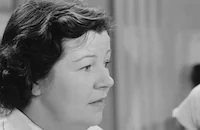
Margaret Bert
Roy Butler
Crew
Douglass Biggs
Earl Brent
Wilhelm Brockway
Daniel B. Cathcart
Myles Connolly
Harry Crane
Mark Davis
Jack Dawn
Peter P. Decker
Leo Delibes
Jack Donohue
Jimmy Durante
Sammy Fain
James Z. Flaster
Ralph Freed
Cedric Gibbons
A. Arnold Gillespie
Sydney Guilaroff
Irene
Henry Koster
A. Lindsley Lane
Leo Linder
Franz Liszt
Felix Mendelssohn
Warren Newcombe
James O'hanlon
Joe Pasternak
Charles Previn
Charles Previn
Charles Previn
George Richelavie
Helen Rose
Douglas Shearer
Robert W. Shirley
Newell Sparks
Herbert Stahlberg
William Steinkamp
Michael Steinore
Robert Surtees
Valles
Richard Wagner
Don T. Whitmer
Edwin B. Willis
Ed Woehler
Wilhelm Wymetal
William Wymetal
Dolph Zimmer

Photo Collections
Videos
Trailer
Hosted Intro
Film Details
Technical Specs

Articles
Two Sisters From Boston
Two Sisters from Boston also teamed June Allyson for a second time with her Music for Millions (1944) director Henry Koster. The Berlin born Koster got his start performing a variety of jobs ranging from children¿s story illustrator to newsreel cameraman. He made the jump first to screenwriter with The Big Opportunity in 1924 and later to director in pictures like The Adventures of a Beautiful Woman (1932) and Peter (1934). But Koster¿s big break came on the movie Five in a Jazz Band (1932) which he wrote and co-directed (alongside a stage director named Erich Engel). The producer of Five in a Jazz Band was Joe Pasternak and he was so impressed with Koster¿s work that he promised the director he¿d work with him on one of his own productions.
In the meantime, Koster was forced to flee Nazi Germany for Paris. But Pasternak hadn¿t forgotten his promise and eventually summoned the young Koster to Budapest to direct some Hungarian releases. Later, when Pasternak was called to Hollywood by Universal, he agreed to go only if the studio allowed Koster to come along. Pasternak and Koster¿s first collaboration for Universal was Three Smart Girls (1936) with newcomer Deanna Durbin. Despite Koster¿s less than fluent English, the movie was a success. It helped pull Universal out of bankruptcy and set Durbin on the road to stardom. Koster would direct five more Durbin pictures at Universal. In 1944, Koster followed Pasternak to MGM where they did Music for Millions and Two Sisters from Boston. Despite their success as a team, it was soon time for Koster to go his own way. He was called on to finish The Bishop¿s Wife (1947) which was already in production. The assignment led to a contract with Twentieth Century Fox, where Koster remained until 1965. Among his best known films are The Robe(1953) which was the first film shot in CinemaScope, Harvey (1950), Flower Drum Song (1961) and The Singing Nun (1966).
Koster would direct Allyson again in the 1957 remake of My Man Godfrey. Years later, he commented on Allyson and co-star Kathryn Grayson in Two Sisters from Boston. Of them he said, "I loved both girls. June was the better actress and Kathryn was the better singer." He would also remember the film Two Sisters from Boston as one of his favorites. Having directed numerous movies with children (for example Margaret O'Brien in Music for Millions), Koster saw Two Sisters as giving him room to grow. Of this film he commented, "It had no children...I could get a little deeper into the life of human beings."
Producer: Joe Pasternak
Director: Henry Koster
Screenplay: Myles Connolly, Harry Crane, James O'Hanlon
Cinematography: Robert Surtees
Film Editing: Douglass Biggs
Art Direction: Daniel B. Cathcart, Cedric Gibbons
Music: Sammy Fain, Ralph Freed, Charles Previn, Jimmy Durante
Cast: Kathryn Grayson (Abigail Chandler), June Allyson (Martha Canford Chandler), Lauritz Melchior (Olstrom), Jimmy Durante (Spike), Peter Lawford (Lawrence Tyburt Patterson, Jr.), Ben Blue (Wrigley).
BW-113m. Closed captioning.
by Stephanie Thames

Two Sisters From Boston
Quotes
Trivia
Notes
The working title of this film was Brighton Beach. The picture marked the screen debuts of New York stage comedienne Marjorie Davies and actress Marina Koshetz, the daughter of opera star Nina Koshetz. A June 1945 Hollywood Reporter news item noted that the film was to mark the film debut of model and entertainer Mara Williams, but her appearance in the released film has not been confirmed.

















